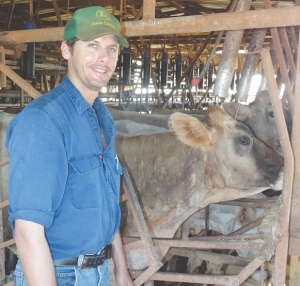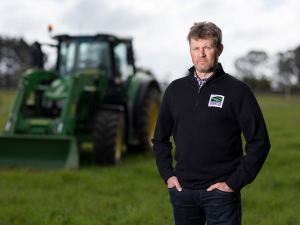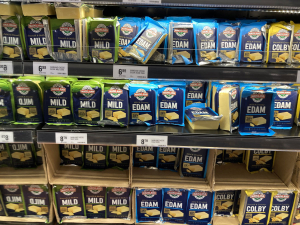Ray Clews says he was hopeful that higher milk prices would eventually flow through, but in the meantime the family was putting the business on a better footing with a modified farming system to reduce costs and improve yields.
Ray and his wife Ailsa have just enacted their succession plan with sons Aaron and Michael taking over the business. But they will continue to be closely involved, helping out with milking.
Ray’s family operated a traditional cream dairy for years when most of the Rossmoya district north of Rockhampton was dairy country.
They switched to pork production, building up a 100 breeding sow enterprise, before deciding to recommit to dairying in the early 1990s with a future for their family in mind.
They invested in a new 15-a-side herringbone dairy, bought milk quota, and built a 300 megalitre ring tank to provide irrigation security. The storage captures runoff-from the local catchment and they also pump overland flow after heavy rain.
“We can get dry spells, although in recent times the problem has been too much rain. We’ve had more than a metre in the last three months.”
The continuous wet poses herd health challenges and has disrupted their farming program.
The milking herd has been built up to 290 cows all either Swiss Brown or infused.
“We are right on the Tropic of Capricorn and we have found the breed is best adapted to handle the climate,” Ray says.
They have a two million litre contract to supply the Parmalat processing plant in Rockhampton which needs all the milk it can get with farmers leaving the industry.
“The factory is pulling milk from a wide area, but it has no certain future. They really need about 30 million litres a year, but at the moment they are getting more like 20 to 25 million,” Ray says.
Their herd is continuously calved to help flatten the year round production cycle. With an automated calf feeding system they raise all their own heifers.
This gives them growth options if and when milk prices pick up and in the meantime they are culling heavily to improve overall herd performance.
A computerised milking and herd management system with automatic cup removers was installed two years ago and this has been a big help in monitoring performance on an individual animal basis.
To improve their feed security, the family have extended their irrigation with three centre pivots covering 10 ha, 25ha and 50ha.
They have traditionally relied on winter ryegrass with clover and chicory for strip grazing from about June until the middle of October before switching to tropical summer grasses with some silage made from dryland dolichos pasture.
Aaron Clews who is focused on the farming side of the enterprise, says the family had been doing some pad feeding for several years, with a mixed ration containing up to 5kg of grain.
About 1.4kg of wheat is fed in the bails at each milking.
Aaron says the family was moved to step up the pad-fed ration, growing corn under the pivots for silage.
“The heat and sunlight is good for growing corn and we’ve had some very heavy yielding crops which are harvested at the milky grain stage.”
Moisture probes placed at different soil depths help make optimum use of irrigation.
They have pit storage capacity for about 3500 tonnes of silage and are building up reserves for feed security.
“We hope to get to the stage where our grain ration is nearly cut in half, replaced by the starch in the corn silage.”
The cattle will still have access to ryegrass grown under pivot for night grazing.
Cover crops of barley or triticale will give them the flexibility of making silage or green manure, depending of seasonal conditions.
















